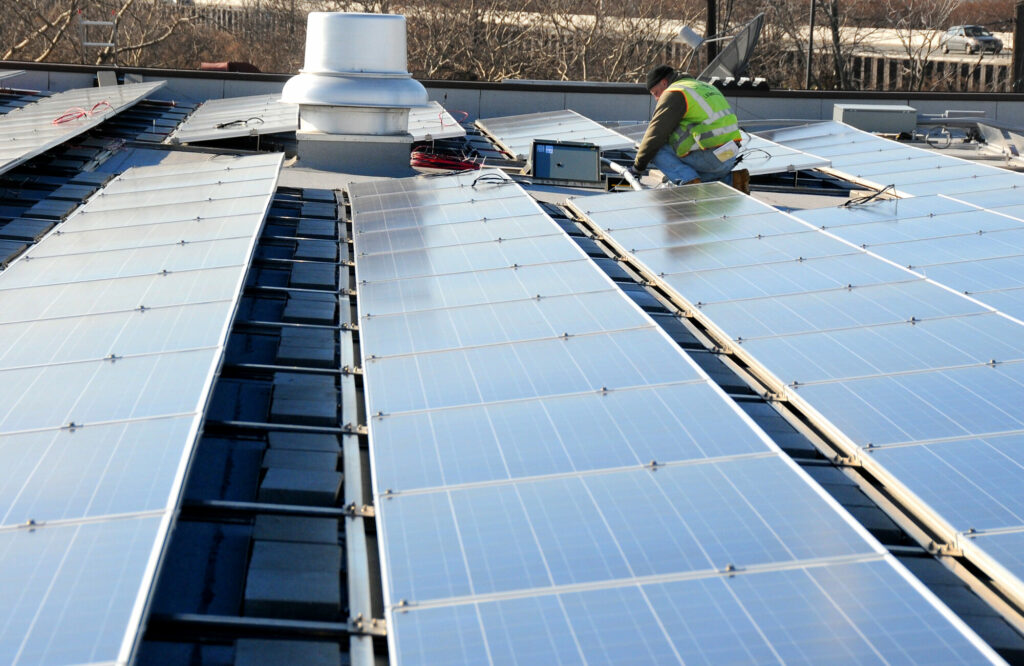How can we reach net-zero emissions by 2050 if fossil fuels account for 80% of the world’s total energy consumption?1 The answer, while elusive, may lie within renewable energy. Renewable energy is energy derived from sources that naturally self-replenish and never run out. The most widely used forms are biomass, geothermal, hydro, solar, and wind. Global demand for solar and wind energy has grown exponentially as more countries are pledging to reduce their carbon footprint. The U.S., for example, reinstated tax credits for solar and wind energy under the Inflation Reduction Act of 2022, motivating developers, investors, and owners of solar and wind assets to reap the financial benefits. Technological advances are also making clean energy more accessible, affordable, and efficient to forge our path toward a carbon-neutral future.
Urgency of the Climate Crisis and Our Commitment to Combat It
Carbon emission reduction is critical to offsetting greenhouse gas emissions caused by fossil fuel combustion. These emissions have many far-reaching effects, including rising sea levels and extreme weather events. Take the recent Hurricane Ian, for example—one of the strongest in U.S. history. While it might be too late to reverse conditions, we must act now to curb emissions or else these catastrophic events will only continue to escalate. Soon enough, we as a planet will not be able to recognize our own home. The only way to slow down the growth rate in emissions is to transition to renewable alternatives.
Actionable Steps in Our Clean Energy Transition
We can approach the clean energy transition in several ways to generate the results needed for emissions reduction. The first step would be to switch to alternative energy sources that are largely available, such as solar and wind. But these sources can be fickle; they only produce energy under specific conditions, and those conditions are not always when that energy is most needed. Determinants include supply, land for power plants and farms, startup/development costs, maintenance costs, etc. Moreover, alternative energy sources should only be used if they do not create adverse effects.
One way to optimize their performance is by using technologies that store excess energy for later use—essentially, for when energy needs exceed production rates. Storage options include, but are not limited to, batteries, pumped hydropower, and compressed hydrogen. With pumped hydropower storage, excess solar and wind energy is used during periods of low demand to pump water uphill. When demand rises, water is released downhill, generating electricity as it runs through a turbine. With compressed hydrogen storage, hydrogen gas is stored in high-pressure vessels for later use, including transportation and large-scale clean energy generation. All three are cost-conscious, flexible, and reliable solutions supportive of net-zero initiatives.
Residential, commercial, and industrial sectors can promote widespread adoption of renewable energy by using distributed generation systems as opposed to centralized generation systems. Distributed generation will help free us from fossil fuel dependence, provide energy independence with more maintainable sources, and invigorate and strengthen the global economy. It also will create a more resilient, sustainable environment for communities worldwide by producing energy with a reduced footprint and less net losses.
Global Issue, Personal Perspective
We at Weston have a vested interest in a healthy environment and economy. Currently, we are using electric vehicle charging stations at both the local (Mundelein and West Chester offices) and national (U.S. General Services Administration [GSA]) levels, installing large-scale solar photovoltaic (PV) systems to reduce fossil fuel dependence (i.e., New Jersey’s largest solar array, generating 35 MW of clean energy and projects in California), and performing plant- and algae-based carbon dioxide sequestration to treat stormwater and wastewater streams for federal, municipal, and industrial clients. Illustrative of our commitment to protect the quality of our water resources and reinvest in the environment, Weston earned an EBJ Award in 2019 for our low phosphorous wastewater treatment system that we designed and installed in the Village of Roberts, Wisconsin.
Weston recognizes renewable energy adoption is imperative for personal, familial, and community success because climate change is one of the biggest challenges shared by everyone, from all walks of life and from all corners of the world. Only through collective action can we, as a global community, make our home more hospitable for generations to come.
Read related project: Toms River Solar Facility Engineering and Environmental Services – Weston Solutions
Contributing Subject Matter Experts: Ed Coggin, Ryan Jendrasiak, Hans Tremmel
